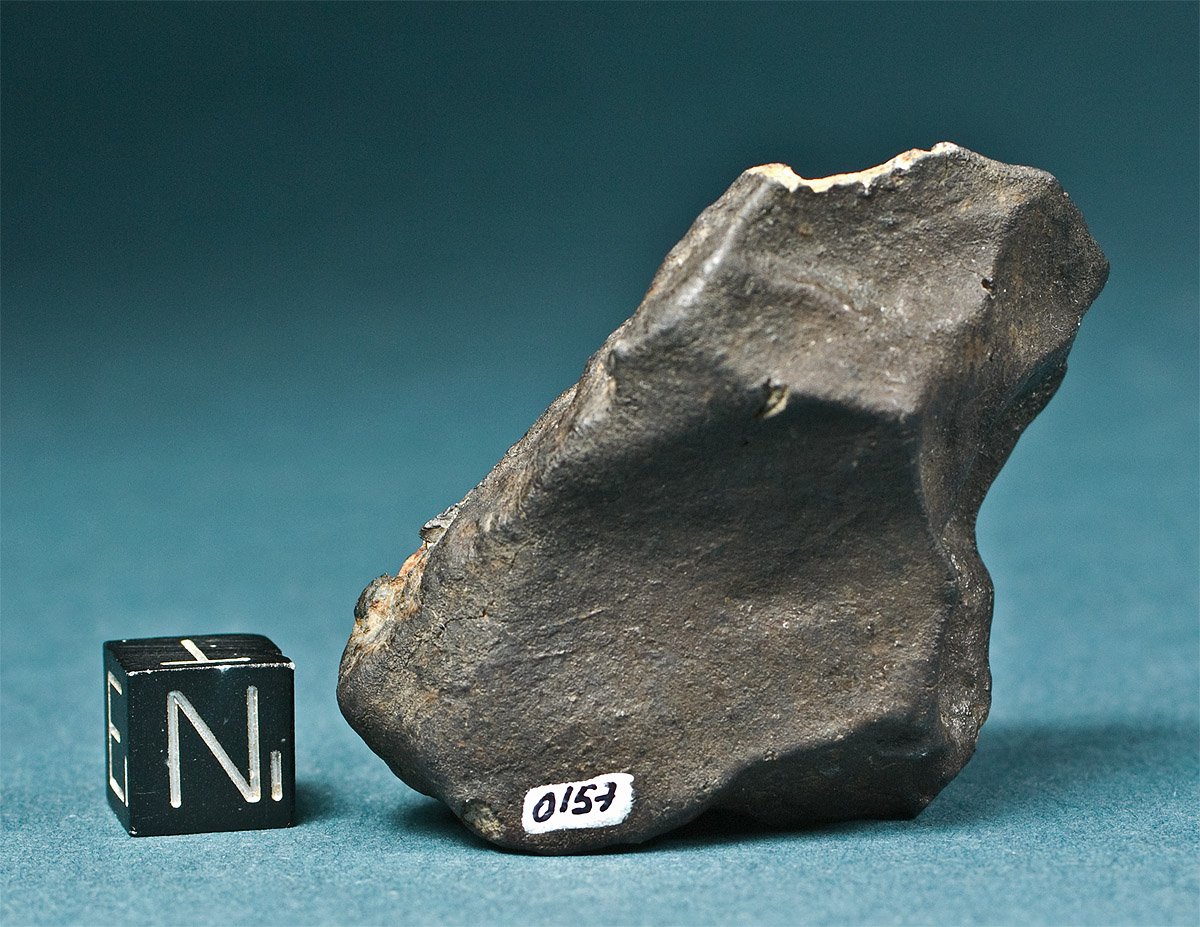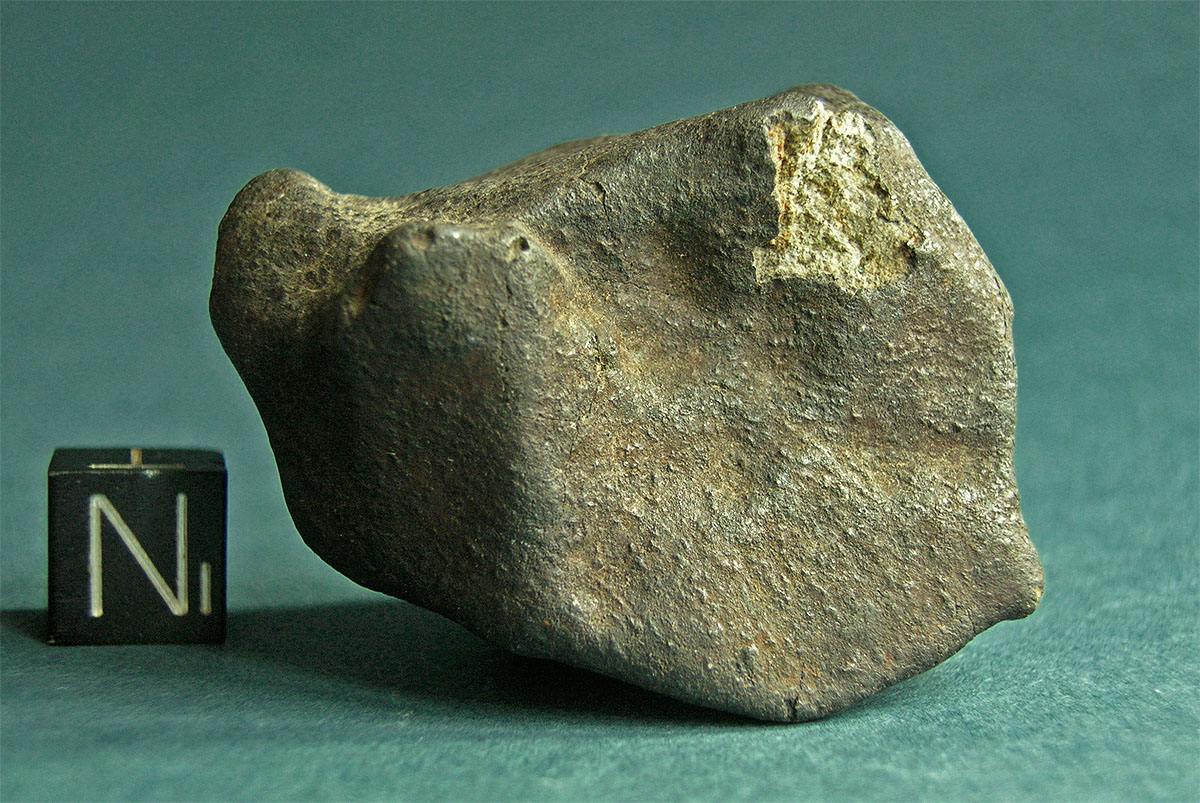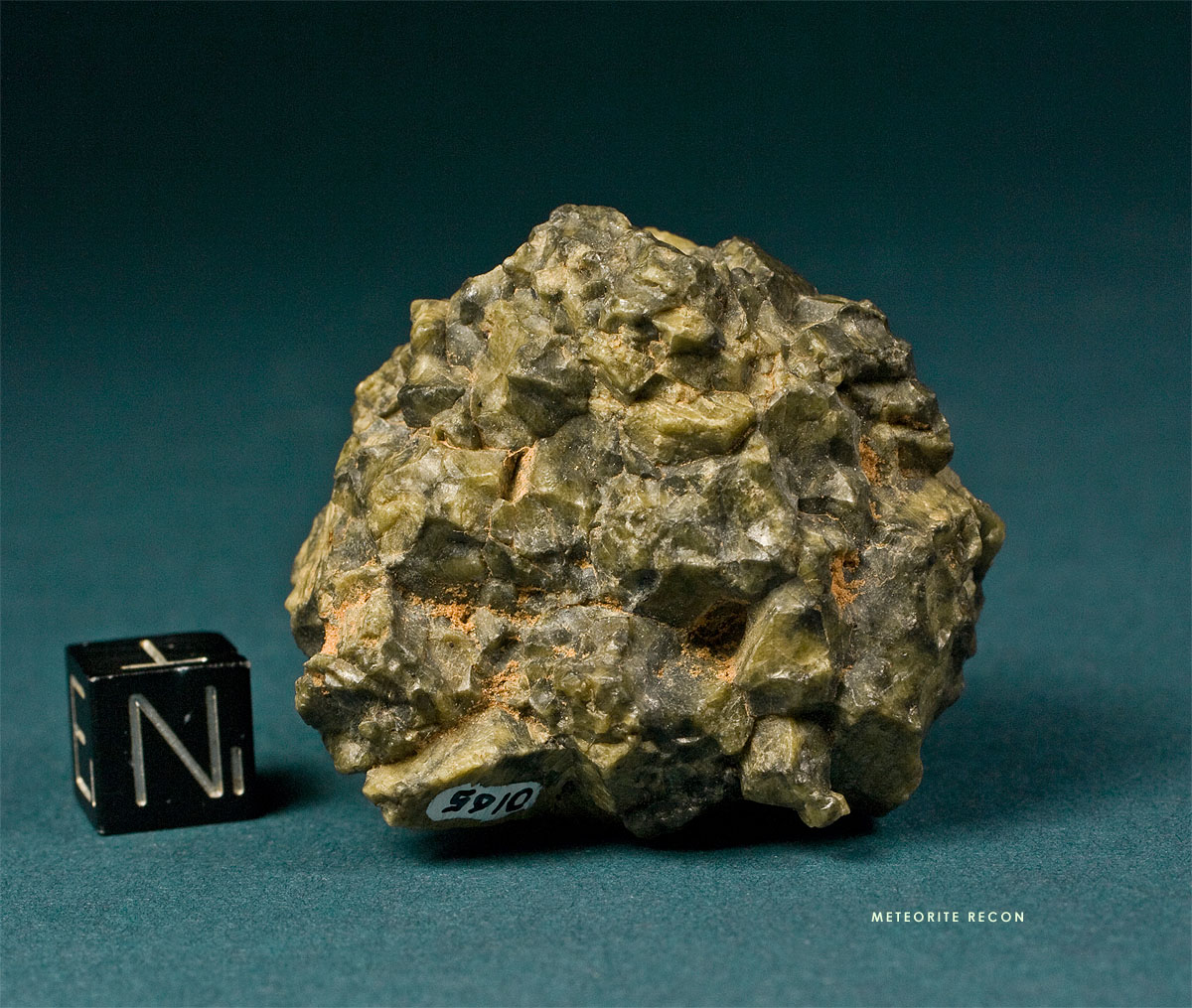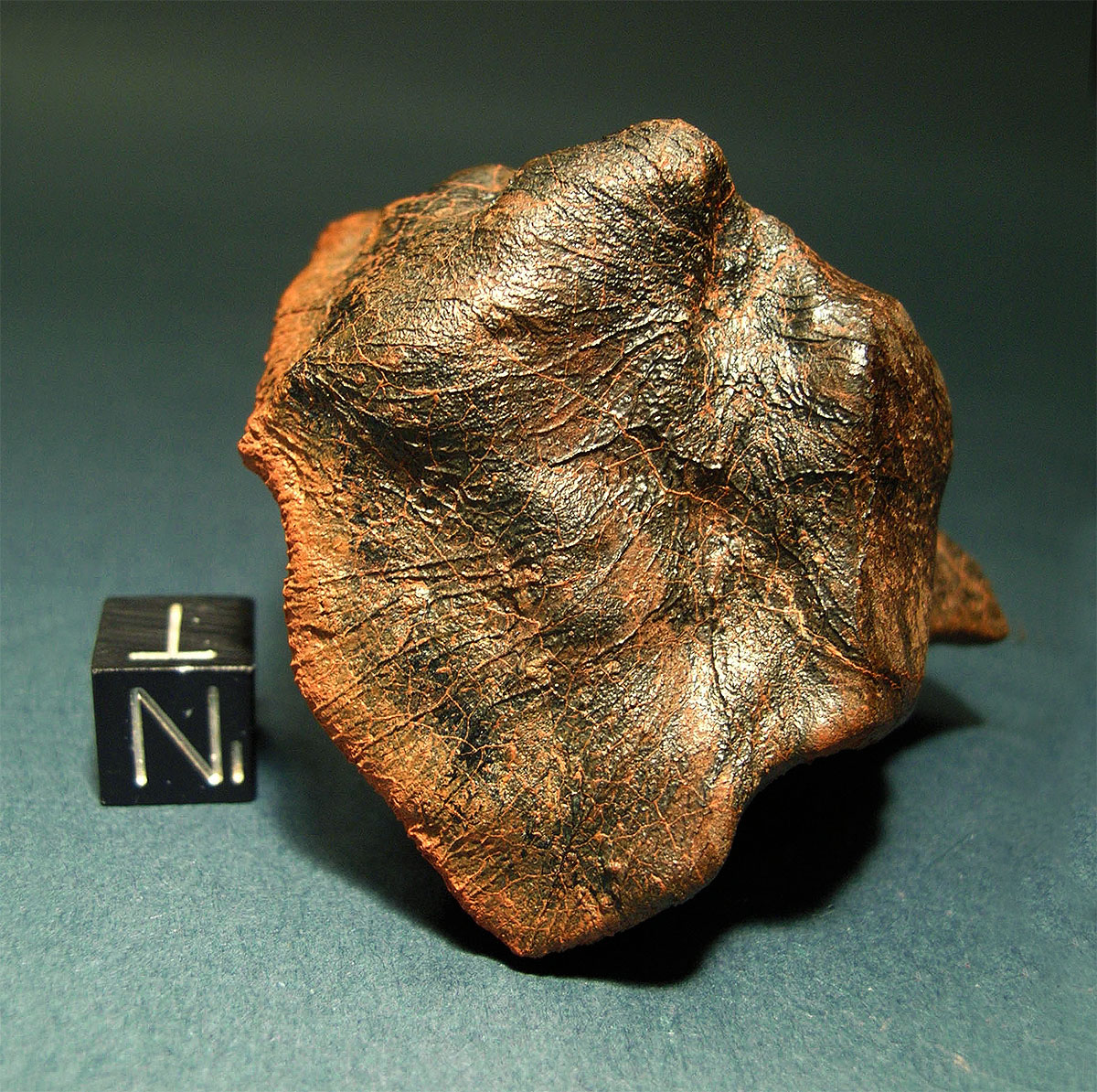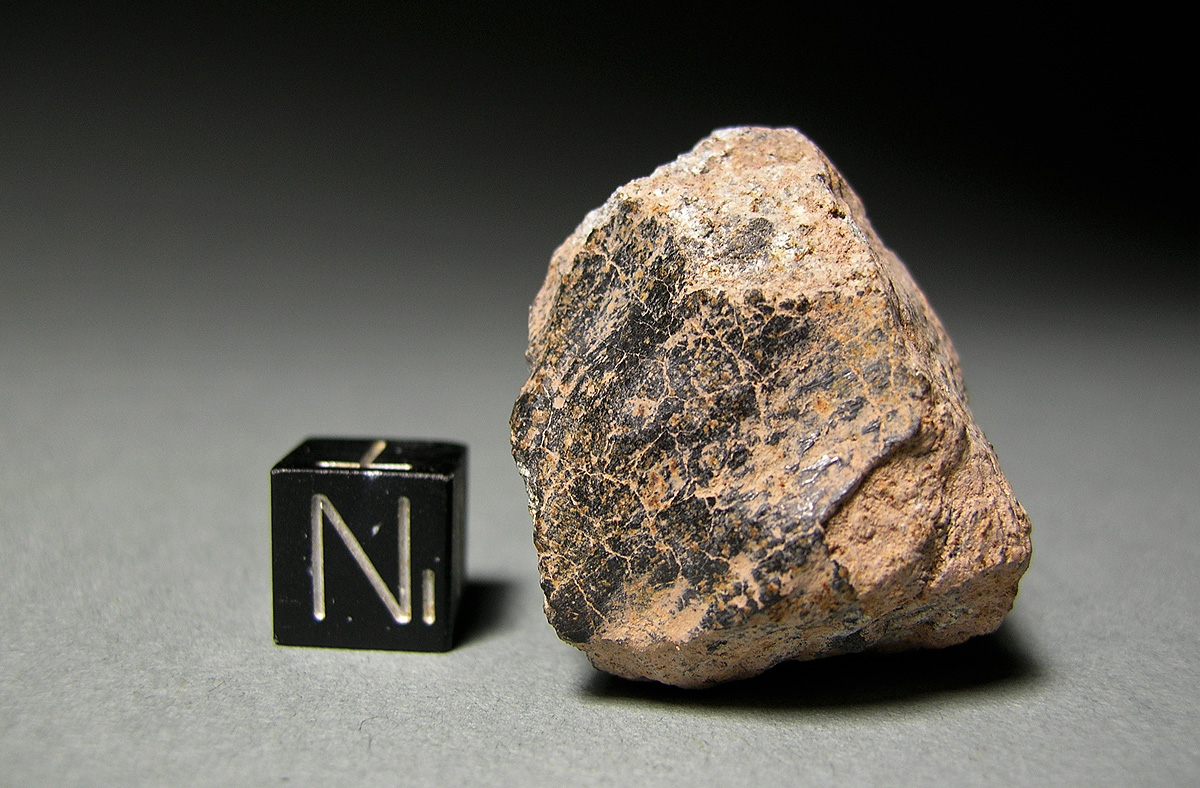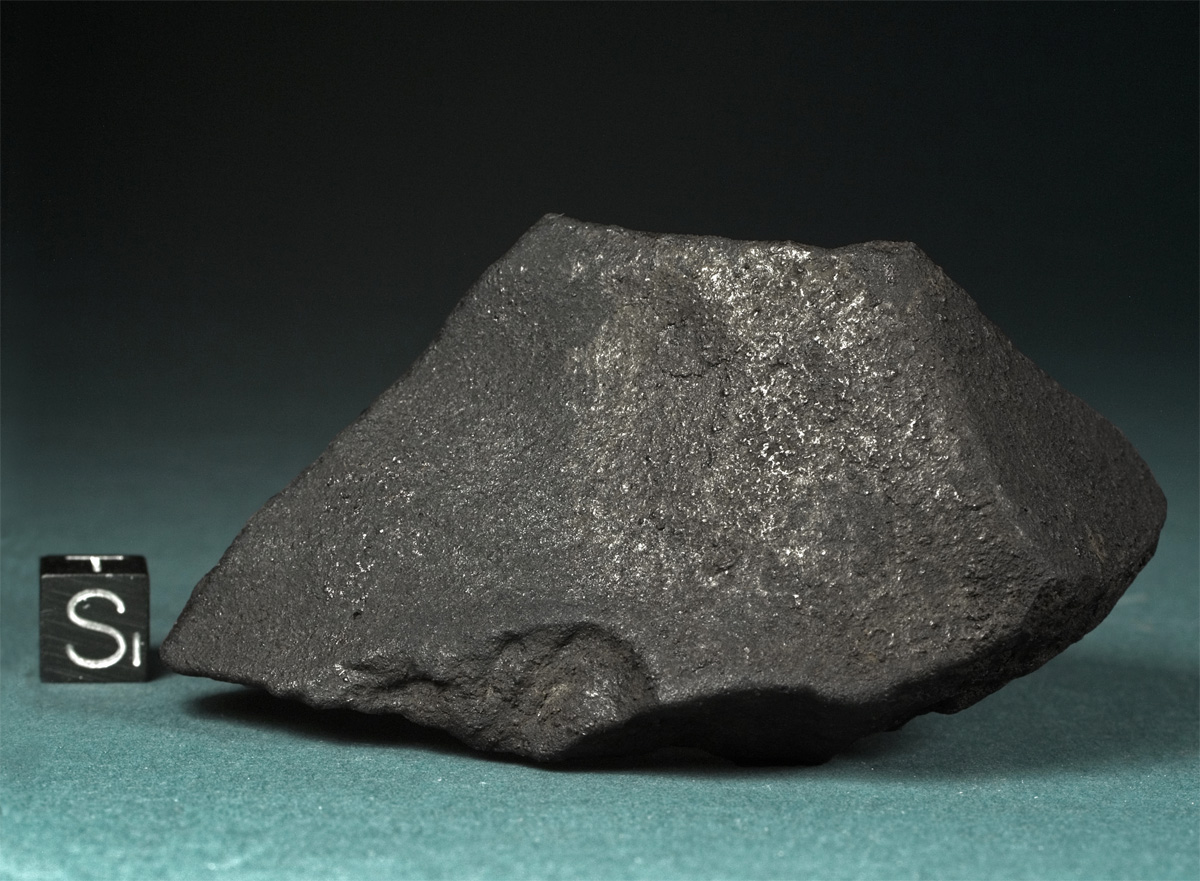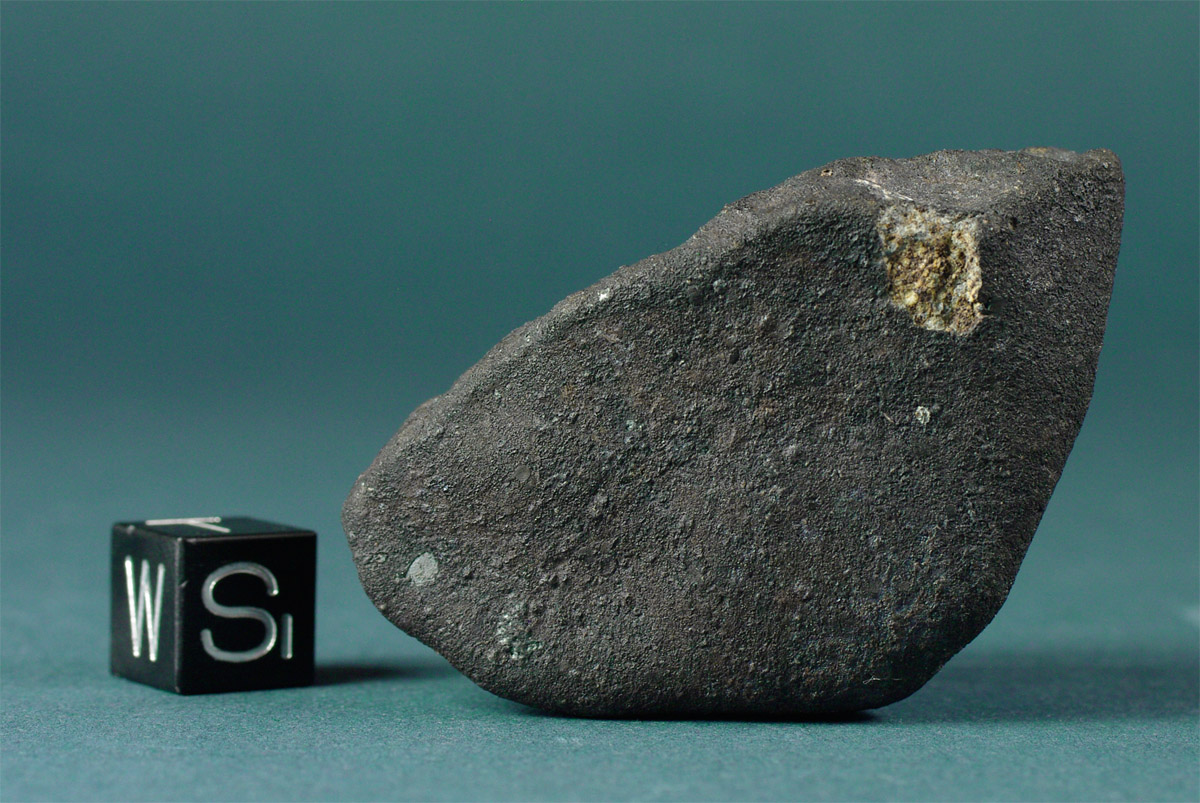Meteorite Recon | Witnessed Falls
Meteorite search expedtions into continental deserts, meteorite features, collection specimens and photography
Meteorites, Meteorite, meteoritic, iron, meteorites, photos, pictures, in situ, strewnfield, strewn field, impact, fall, finds, Meteorite searching
150
archive,paged,tax-portfolio_category,term-witnessed-falls,term-150,paged-2,eltd-core-1.0.1,ajax_fade,page_not_loaded,,borderland-ver-1.8, vertical_menu_with_scroll,smooth_scroll,paspartu_enabled,paspartu_on_top_fixed,paspartu_on_bottom_fixed,transparent_content,grid_1300,wpb-js-composer js-comp-ver-6.0.3,vc_responsive,elementor-default,elementor-kit-6471
Stone, chondrite, L5-6, W0
Cluj, Transsylvania, Romania
Fall: February 3, 1882, 16:00 hrs
TKW: ~ 300 kg
Individual 68.90 g
Fully crusted individual with inventory label from The Vienna Museum of Natural History. The Mocs meteorite shower fell on February 3, 1882 at 16:00 hours in the afternoon in Cluj, Transylvania. Around 300 kilograms of stones were recovered, the largest of 56 kg. The majority of the specimens collected were purchased from the Vienna Museum of Natural History, and from there many were distributed to other museums in Europe and the US via trades .
Stone, chondrite, H5
Ostrolenka, NE Warsaw, Poland
Fall: January 30, 1868
TKW: >200 kg
Individual 74.20 g
The majority of the Pultusk meteorites that were collected after the fall were tiny pellets also known as “Pultusk peas”. With 74 g this meteorite already is a rarity from this location. However, recent discoveries made with metal detectiors include larger specimens as well. This fresh individual was collected and sold to 19th Century Mineral dealer Anton Berger right after the fall and shows well preserved fusion texture and adherent soil, a small chip has broken off one edge.
Stone, diogenite achondrite, ADIO
Foum Tatahouine, Tunesia
Fall: June 27, 1931, 01:30 hrs
TKW: 12 kg
Fragment 72.50 g
Very rare monomict Ca-poor diogenite. Witnessed fall from June 1931. Tatahouine exploded at the end of the cold flight into a cloud of fragments with only a handful exceeding 39 grams in weight. This golfball-sized specimen has still Tunesian soil adherent.
Stone, achondrite, eucrite, monomict, AEUC-M
Jundee Station track, Wiluna District, Western Australia
Fall: October 1960
TKW: >100 kg
Individual 77.90 gm
At 1:00pm in mid October, 1960 the two workmen opening a cattle gate in the boundary fence along the Millbillillie – Jundee Station track were struck by the sight of blazing fireball descending from the sky with a thunderous sound. But it was not until 1970 that the first meteorite was found. The specimen has the shape of a twin cone with two apexes and a flat trailing edge. Flowlines run from the twin tops towards the edge to the rear making the complete meteorite appear distinctly streamlined from all sides. These flowlines culminate in a number of spikes protruding from the thick rollover lip encircling the trailing side. The two apexes are separated by a deep gorge melted into the monomict eucrite material.
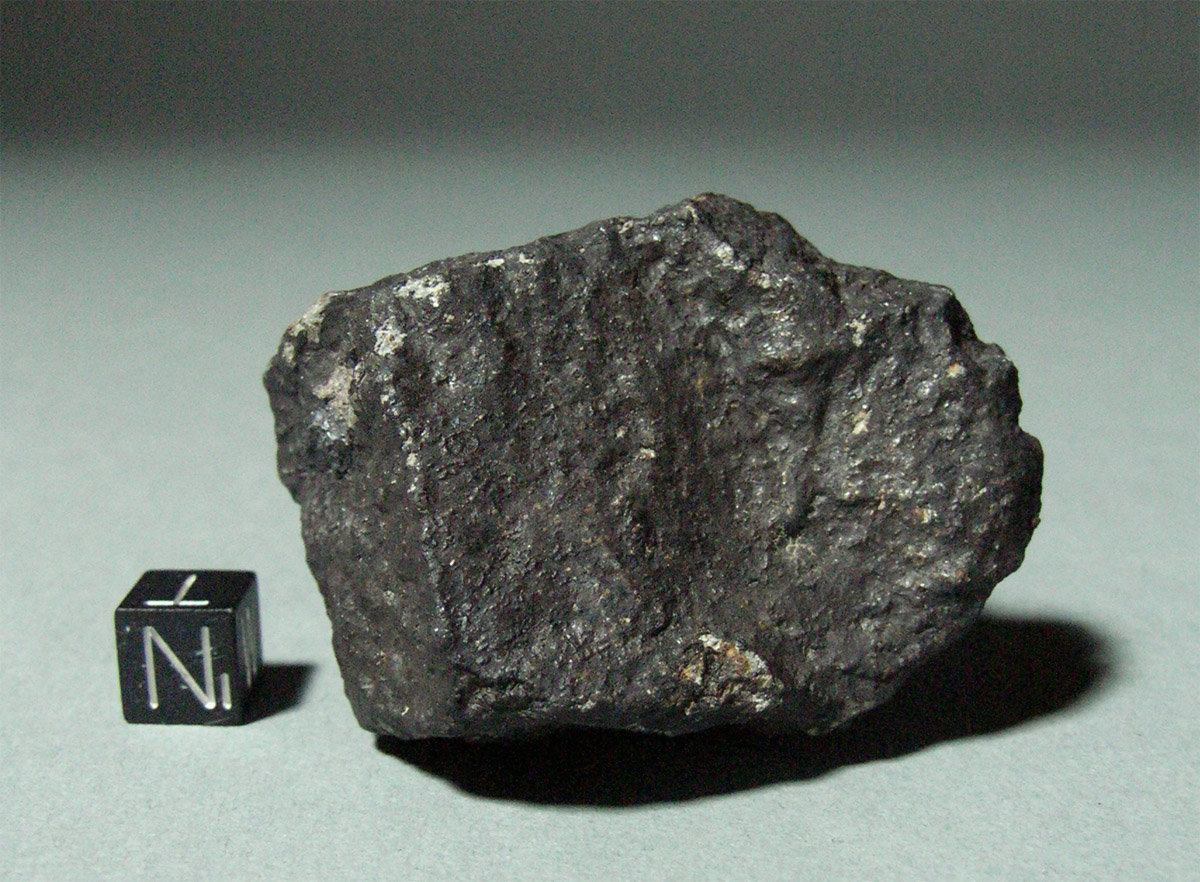
Stone, chondrite, H4/5, S2/3
Berea, Lesotho
Fall: July 21, 2002, ~13:49 GMT
TKW: 45.3 kg
Individual 127.90 g
Cuboid and compact specimen with six surfaces and fresh secondary crust. “The Thuathe meteorite was travelling east to west and exploded over Lesotho producing an elliptical strewn field extending 7.4 by 1.9 km (bearing: ~276°) on the westernmost lobe of the Thuathe (or Berea) Plateau, ~12 km east of the capital city of Maseru. The explosion was accompanied by an extraordinarily loud, 15 s long noise which was heard over a large (100 km radius) area of Lesotho; the fall was eye-witnessed by several people who reported sightings of dust trails of “sparkling objects” over Lesotho and the southern part of the Free State Province of South Africa. Many villagers of Ha Ralimo, Boqate Ha Majara, and Boqate Ha Sofonia reported falls of stones close to themselves and onto their homes” (Met Bul. no. 87). This specimen is listed in the Ambrose Catalog as number 122 and was found in zone A on the Thuathe Plateau between Baruting and Ha Ralimo.
Stone, ordinary chondrite, H4-5, W0
Carancas, Chucuito, Puno, Peru
Fall: 15 September 2007, ~16:45 UTC
TKW: 342 g
Fragment 27.20 g
Walnut-sized mass that fragmented along a shock plane on one surface. Slickensides and few remnant chondrules visible. At 16:45 UTC in the afternoon of September 15 the small town of Carancas in Peru was shaken by an enormous detonation. Eye wittnesses descibed a smoke trail that had descended from the sky and exploded on contact with the ground. Windows were shattered and buildings were damaged by ejected secondary debris. A mushroom shaped explosion cloud raised from the impact site and stood several minutes above a fresh crater measuring 13 meters in diameter. Carancas is an exceptionally rare case of a contemporary stone meteorite fall that produced a crater.

Stone, chondrite, H5 transitient to H impact melt breccia
SW El Mokhtar, Erg Chech, Timbuktu district, Mali
Fall: July 2007, daytime
TKW: ~100kg
Individual 1,183 g
“History: In fall and winter, 2007 ~100 kg of meteorites were collected in the Erg Chech, north of Taoudenni. Nomads reported the stones fell after a smoke cloud was seen and several detonations were heard over a wide area during daytime in July 2007. The finder of the first meteorites was Mr Ouled Bleila, who died in a car accident on his way back from the trip to the Chergach strewn field in October 2007. According to the Tuareg people from Algeria who visited the fall site in September 2007, the elliptical strewn field stretches for more than 20 km in a northeasterly direction. No fireball was reported. “Meteoritical Bulletin 94, 2008.
This specimen is a brick-shaped individual with fresh fusion crust, gently curved flanks, lipping on several edges and radial flow lines on one surface (pictured). Obvioulsy this was the front end in the last stage of the ablation phase. Elegant and immaculate meteorite.
The 2nd collection specimen is a 492 g dhield-shaped oriented individual with convex breastside and centred apex. Radial flow lines and distinct splash marks originating from the apex cover the complete convex breastside. The flow lines run around the smoothened edges and disappear into deep gorge shaped regmaglypts on the retral flanks. These furrows contributed to a stable flight attidude of the projectile. The trailing edge shows a distinct melt rim along three quarters of the edge. Fusion crust on the breastside is deep black with flow lines and splash marks shimmering in the light as if still liquid. The trailing edge displays a thick fusion crust with a more velvet like texture and a shade of brownish red. The meteorite measures 10.2 x 9.4 x 3.9 cm.
Stone, carbonaceous chondrite, CO3.2
Muslyumovo, Tartarstan, Russia
Fall: Spetember 13, 1937, 14:15hrs
TKW: ~200 kg
Individual 265.30 g
Fully crusted individual with pyramidal shape and trapezoid base. The specimen has seven surfaces of which two display primary fusion crust while the remaining show secondary crust. The mass apparently sheared off a larger mass while still in the hot flight phase. This particular meteorite was recovered using metal detectors by a Russian field team in Spring 2008. Although in the ground for 71 years, the meteorite shows only very little weathering. The lower photograph shows the meteorite in situ.
(syn.: AMGALA)
Stone, chondrite, H3-5, W0
Gour Lafkah, Western Sahara
Fall: October 16, 2003, 02:20 UT
TKW: ~17 kg
Individual: 65.00 g
The Oum Dreyga meteorite fell in Western Sahara after a brilliant fireball in a heavily mined area along fortified positions of the Moroccan Army guarding the border to Algeria. The current MINURSO fort where a detachment of the United Nations is stationed to survey the Western Sahara conflict is only a few kilometers from the fall site. Only a fraction of the fallen meteorites could be recovered in the difficult and rocky terrain. The 65 g individual shows a thick rich fusion crust with one surface enclosed by lipping.
Stone, achondrite, diogenite (ADIO)
Gnagna, Bilanga, Burkina Faso
Fall: October 27, 1999, 10:30 hrs
TKW: >25 kg
Individual: 58.01 g
“After a widely witnessed shower, at least 25 kg of meteorites with fresh black fusion crust were collected, comprising many stones. Pieces are reported to have fallen in the villages of Bilanga-Yanga and Gomponsago” (MetBul No. 84). Many masses including the oriented 7.5kg main mass displayed flow lines, some specimens showed dark shock veining. Bilanga is a unique magnesium-rich and calcium-poor diogenitic breccia and one of only 11 witnessed falls of a digenite meteorite. As can be seen in the image above the meteorite shows a fresh shiny black fusion crust coating a bright white matrix with a tint of green. Large orthopyroxene clasts are visible to the unaided eye.




